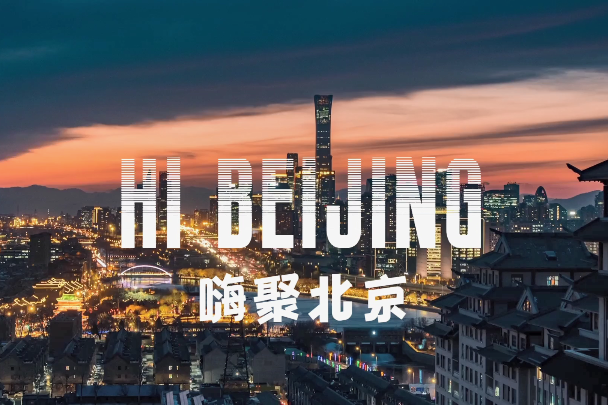Beijing takes strides to boost high-quality development

Capital's growth driven by advanced technology, talents and innovation
In the past few years, Beijing has taken key measures to optimize resources and boost high-quality development in all walks of life.
Zhao Lei, member of the Standing Committee and secretary-general of the CPC Beijing Municipal Committee, said that the capital is proposing the concept of "reduction development", which views development as the key and focuses on taking full advantage of resources.
"First of all, we must resolutely reduce non-renewable production and promote high-quality development driven by technology, talents and innovation," Zhao said, adding that in recent years, Beijing has insisted on increasing investment in innovation and technology.
The digitalization rate of production equipment in industrial enterprises above designated size exceeded 54 percent and the numerical control rate of key processes exceeds 53 percent.
In Beijing, leading digital technologies have enabled companies to innovate and improve their income. There are 18 software companies with a value of more than 10 billion yuan ($1.38 billion).
In 2021, the added value of Beijing's digital economy reached 1.6 trillion yuan, accounting for 40.4 percent of the city's GDP; the annual operating income of the internet and information technology service industries reached 2.2 trillion yuan.
"We will take the lead in building an international science and technology innovation center, the 'two zones' and a global digital economy benchmark city, create new demand through supply-side structural reform and further promote the integration of the Beijing-Tianjin-Hebei region," Zhao said. With the superimposed advantages of the Beijing Daxing International Airport, a series of projects have been implemented rapidly.
Up to now, the China (Beijing) Pilot Free Trade Zone has completed the registration of 194 enterprises with a total capital of 68.84 billion yuan.
"We take the construction of the 'two districts' as a priority, focus on the new benchmarking goal of the construction and development of the global airport economic zone and promote the high-quality development of the region," said Luo Boming, deputy director of the airport's management committee.
Driven by the construction of the "two districts", Beijing has become more attractive to foreign capital. By 2021, more than 1,900 foreign-funded enterprises based their operations in Beijing. The paid-in foreign capital in the first quarter of this year reached $6 billion, a year-on-year increase of 21.9 percent.
Transforming Beijing into an international consumption center has become an important starting point for the city to create new demand through supply-side structural reform. The key to building a new development pattern is the unimpeded economic cycle, and driving consumption upgrades with high-quality supplies will help to open up the economic cycle, said an official of the Beijing Municipal Bureau of Commerce.
"In the future, we will follow the spirit of the 20th National Congress of the Communist Party of China and the unified deployment of the central government, making continuous efforts to make Beijing's contribution to the great rejuvenation of the Chinese nation," he added.
Zhao said that the coordinated development of Beijing-Tianjin-Hebei is a major national strategy made by the central government and Beijing has shifted from seeking growth from the previous agglomeration function to a coordinated development model integrating nearby regions.
"The central government's positioning of Tianjin is 'one base and three areas', namely the national advanced manufacturing research and development base, the northern international shipping core area, the financial innovation operation demonstration area, and the reform and opening-up pioneer area," said Jin Xiangjun, deputy Party secretary of Tianjin.
Tianjin fully serves Beijing's non-capital functions, serves the construction of Xiong'an New Area, and plays a unique role in the aspects of industrial synergy, regional synergy innovation, system synergy reform, infrastructure synergy construction and social synergy governance.
"For example, Beijing highlights independent innovation and originality and Tianjin can undertake incubation and pilot testing," Jin said.
Lian Yimin, deputy Party secretary and secretary-general of Hebei, said Hebei is relieving non-capital functions and accelerating its own development in connecting Beijing and Tianjin.
In addition, Lian introduced the construction of Hebei's "three zones and one base", namely the national industrial transformation and upgrading pilot zone; the national new urbanization and urban-rural coordination demonstration zone; the Beijing-Tianjin-Hebei ecological environment support zone; and a national modern trade and logistics base.
"The foundation for the coordinated development of Beijing-Tianjin-Hebei is getting more and more solid, and the prospects are getting better," Lian said.






